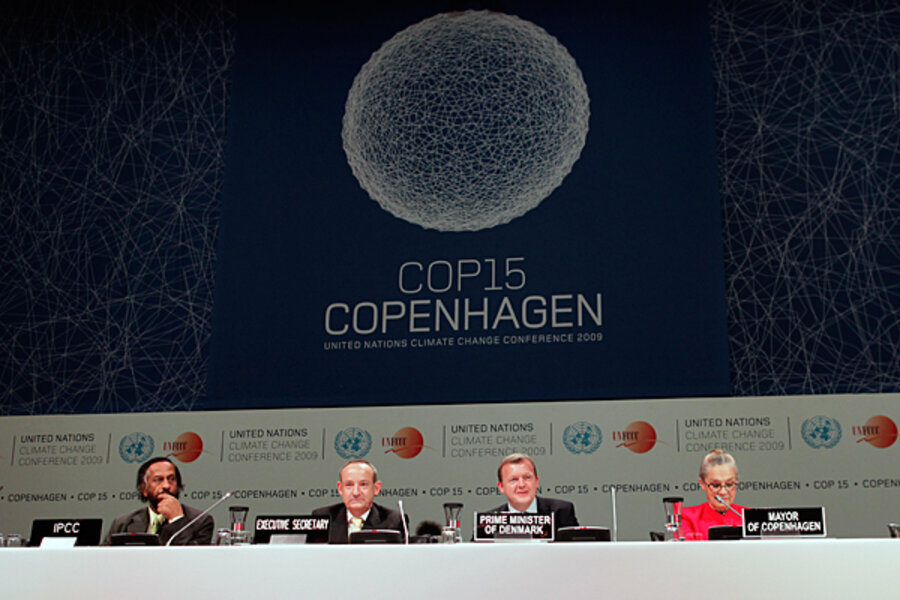Copenhagen one year after: Did global warming talks accomplish anything?
Loading...
The widely criticized global warming agreement that emerged from the Copenhagen summit last December has actually put climate talks in a decent position as negotiators gather to resume discussions in Cancun, Mexico, Monday, according to a UN-sponsored report.
So far, 140 countries have signed the accord, though it is nonbinding. The report looks at what might happen if the countries fulfill only their more modest pledges or if they fulfill their most aggressive pledges.
Under this second, best-case scenario, emissions of greenhouse gases could drop 7 billion tons a year by 2020 compared with business as usual. While that would fall 40 percent short of the widely accepted goal of holding global warming largely in check by century's end, it would be a useful start, the report's authors add.
The difference could be made up through with existing technologies, they estimate. Those technologies, however, would have to be ramped up more aggressively than the Copenhagen Accord envisions.
"Keeping climate change within manageable limits is doable, but the window for cost-effective action is narrowing with each year of delay," says Amy Fraenkel, who heads the UN Environment Program's (UNEP) regional office for North America.
Since the Copenhagen talks, many countries have settled on the goal of holding current episode of global warming – underway for more than a century – to an increase of around 2 degrees Celsius (3.6 degrees Fahrenheit) by 2100. Some developing countries have argued for a 1.5-degree target, but the report sees that goal as unrealistic.
To put the climate on the path to the 2 degrees C goal, worldwide emissions of greenhouse gases would need to fall to 44 billion tons a year by 2020. The report found that:
- If nothing is done – the "business as usual" scenario – economies around the world would pump 56 billion tons a year of greenhouse gases into the atmosphere in 2020.
- If only the more-modest pledges in the Copenhagen Accord hold sway, the report projects that emissions be about 53 billion tons a year by 2020.
- If countries meet their most-aggressive pledges and apply rigorous and transparent accounting rules, emissions could fall to 49 billion tons a year by 2020.
Even if the most aggressive pledges in the Copenhagen Accord are all accomplished by 2020, that would still put the climate on track for an average temperature increase of 2.5 to 5 degrees C over preindustrial levels by 2100, according to the study.
Moreover, the calculations for the most-aggressive pledges hinge on actions that might not materialize. The US Congress, for example, has all but killed any effort to pass comprehensive cap-and-trade energy legislation.
Another challenge is that even if countries were to meet a 2020 goal of cutting emissions to 44 billion tons, additional and much deeper cuts would have to follow by 2050 to maintain the 2-degree-C trajectory, the study says.
The UN report is a first attempt at sorting through several different, often conflicting analyses of the Copenhagen Accord's potential effect on emissions. "There were a lot of different messages coming out of those reports – everything from 'we're doomed' to 'we're almost there' and different explanations for why that was," says UNEP's Ms. Fraenkel.
UNEP coordinated the report, which drew on the efforts of 30 scientists in 25 research institutions in countries ranging from the US and Japan to China and Mexico.
The challenge for negotiators at Cancun will be to find ways to turn as many of the pledges as possible into formal commitments of some kind, says Kelly Levin, one of the report's authors and a specialist on developing-country emission-reduction efforts at the World Resources Institute in Washington. At the same time, negotiators will have to develop the transparent accounting rules that would give countries confidence that others are living up to their pledges, he adds.





